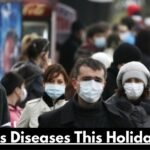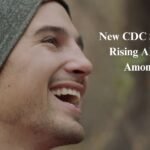Scientific Asia: According to new American Cancer Society research, the incidence of breast cancer has increased, particularly among younger adults, and major racial disparities persist despite a consistent drop in the number of breast cancer fatalities in the United States.
On Tuesday, CA: A Cancer Journal for Clinicians reported positive findings from the trial. Between 1989 and 2022, the US saw a 44% decrease in the overall breast cancer death rate, or over 518,000 fewer breast cancer deaths.
This is mainly due to better cancer treatments and early detection through screening, which experts recommend for women at average risk starting at age 40.
However, there was also some alarming information: between 2012 and 2021, the disease’s incidence increased by 1% annually.
Karen Knudsen, CEO of the American Cancer Society and its Cancer Action Network, said that over the past ten years, breast cancer cases have been rising by about 1% each year. However, not all women are equally affected by this increase.
“For women under 50, the rate of breast cancer diagnosis is slightly higher than for women over 50,” the spokesperson stated. “We are observing these things to understand.”
A different study released in January found that breast cancer cases among women aged 20 to 49 have increased over the past 20 years.
“People are being diagnosed with cancer at younger ages than ever before. This is similar to trends seen in other cancers, like colorectal cancer.”
Researchers are still studying the complicated and multifaceted reasons behind the increased prevalence of breast cancer in younger patients.
According to the American Cancer Society, over 310,720 women will receive an invasive breast cancer diagnosis this year, and about 42,250 will pass away from the illness.
Dr. Christopher McGreevy, associate chief of breast surgery at Hackensack University Medical Center in New Jersey, told Fox News Digital that “we are seeing similar trends in other countries as well—the increased prevalence of breast cancer is not only an issue in the U.S.”
Potential reasons for the younger trend
“McGreevy said there are many reasons why more young women are getting breast cancer, and scientists are still trying to understand them.”
The physician mentioned that an increased number of people had early-onset breast cancer.
He stated that excess weight, especially after menopause, fuels estrogen production, a key factor in certain breast cancers.
According to McGreevy, delaying childbearing can potentially accelerate the disease’s start because pregnancy lowers a woman’s risk of developing breast cancer.
He said that environmental toxins, found in everything from plastic to pesticides, are also suspected contributors. These endocrine disruptors mimic estrogen in the body, potentially triggering abnormal cell growth.
The doctor explained that genetics could play a role in the rise of breast cancer cases. “Gene mutations like BRCA1 and BRCA2 can greatly increase the risk, even in younger individuals,” he said.
“The COVID-19 epidemic may be causing more young women to be diagnosed with breast cancer. Researchers think this is because screening for breast cancer was delayed during the pandemic.”
Possible drawbacks
There were some limitations associated with the study, the researchers acknowledged.
Giaquinto explained on Scientific Asia that the study looks at risks and trends for all women and doesn’t take into account personal factors like other health conditions, treatments, or social factors like insurance coverage.
“We also present statistics for the broadly defined racial and ethnic groups, which mask substantial differences within these populations.”
Avoidance tips
“Giaquinto said the best way to prevent breast cancer is to talk to your doctor about getting checked.
She told News Platform that early detection is one of the best ways to improve survival.”
“Every woman should continue to get the standard screenings for breast cancer. Given that the US Preventive Services Task Force recently lowered its recommended age to 40, this is especially important for younger women.”
Giaquinto continued, “Women should also be aware of their personal risk factors and family history.”
The researcher advised that women can lower their risk of breast cancer by limiting alcohol intake, keeping a healthy weight, and staying physically active.
“About 30% of all breast cancers are attributed to these lifestyle factors.”
Variations by race and region
Researchers from the US Centers for Disease Control and Prevention, Cornell Medicine, Harvard Medical School, and the American Cancer Society examined data on breast cancer incidence and fatalities from 1975 to the present from the National Cancer Institute and registries. They discovered some notable variations in the data according to age, race, and state.
Despite having a 5% lower risk of developing breast cancer than white women, black women nevertheless had a 38% higher death rate from the cancer, according to the study.
“A closer examination of the mortality data reveals that young women are the main drivers of this,” stated Dr. William Dahut, chief scientific officer of the American Cancer Society. “Black women between the ages of 20 and 29 have twice the risk of dying from breast cancer than their White counterparts.”
According to the findings, black women die at the greatest rate of all. In the Asian American/Pacific Islander population, the rate was approximately 12 fatalities per 100,000 women; in the Black community, it was approximately 27 deaths per 100,000 women.
According to the research, women of Asian American and Pacific Island descent experienced the fastest annual increases in breast cancer incidence among women under 50 (2.7% annually) and women over 50 (2.5% annually).
It is especially alarming that Asian Americans and Pacific Islanders are experiencing an increase in the prevalence of breast cancer. Dr. Ruth Carlos, an assistant chair for clinical research at the University of Michigan and professor of radiology, wrote an email stating that “emerging data suggest that some gene mutations predisposing to breast cancer may result in greater risk among Asian women compared to White women.” Dr. Carlos was not involved in the new report.
“It is disheartening that results for women of color seem unchanging,” she continued. “Several research teams are looking into how structural discrimination affects breast cancer development biologically.”
In the data, some geographic variance was also found. The incidence of breast cancer varied from 113 instances per 100,000 women in Nevada to almost 143 cases per 100,000 in North Carolina, the researchers discovered.
The death rate from breast cancer was higher in some states than others. Massachusetts had a rate of about 15 deaths per 100,000 women, while Mississippi and the District of Columbia had rates of around 23 and 24 deaths per 100,000, respectively.
Researchers said these differences were due to several factors, including how often women got mammograms, how easy it was to get medical care, and the number of women who had risk factors for breast cancer.
They predicted that over 42,000 women would die from breast cancer this year. About 311,000 women in the United States would be diagnosed with breast cancer, which is about 1 in 8 women.
Carlos praised the researchers for their careful study of breast cancer patterns.
“They have found concerning patterns, particularly about breast cancer in younger women,” the author stated. “Risks associated with the environment, lifestyle, and genetics may be causing this increase.”
We see it in our office every day.
Dr. Carmen Calfa, a medical oncologist at the University of Miami Health System, said the report’s findings match what many doctors are seeing in real life, even though she wasn’t involved in the study.
Calfa stated, “We notice a concerning rise in breast cancer cases in our office every day as we see patients of all ages, but we are seeing more young patients than before. My youngest patient was diagnosed with breast cancer at just 20 years old.”
“Patients are coming to us at a younger age and a higher rate,” the spokesperson stated. “Although younger patients are experiencing a higher incidence of breast cancer, the trends across other cancer types have been very significant and consistent, leading us to wonder if this is a finding unique to breast cancer.”
Many of the risk factors for breast cancer are also frequent for other types of cancer, according to Calfa, which may explain why the frequency of these cancers is rising at younger ages.
She said, “All the common risk factors are present, and I believe we have a big opportunity here. It’s all about lifestyle, like what we eat, the diets we choose, and how much we exercise.”
Breast cancer risk factors also include a specific genetic mutation, higher alcohol intake, a family history of the disease, and biopsies of a high-risk breast lesion.
Breastfeeding your children, if feasible, maintaining a healthy weight, exercising, using alcohol in moderation or not at all, and, for certain individuals, taking drugs like tamoxifen are some strategies to lower your risk of developing breast cancer.
“As far as prevention, early detection, treatment, and ultimately overall outcomes are concerned, I would also urge every woman and man to try to understand their risk and to be their best advocates,” Calfa stated.











